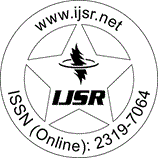Downloads: 4
India | Ayurveda | Volume 14 Issue 9, September 2025 | Pages: 1028 - 1031
Management of Adenoid Hypertrophy - A Case Report
Abstract: Adenoids, or the pharyngeal tonsil, are lymphoid tissues located in the roof and posterior wall of the nasopharynx. They form an integral part of Waldeyer?s ring and play a critical role in immunological defense during early childhood. The common etiological factors are recurrent upper respiratory tract infections, allergic rhinitis, and exposure to environmental irritants. It typically manifests in children between 3 and 7 years, leading to nasal obstruction, mouth breathing, snoring, hyponasal speech, and recurrent otitis media with effusion due to Eustachian tube dysfunction. Diagnosis is primarily clinical, supplemented by nasal endoscopy and lateral radiographs of the nasopharynx. Untreated cases may result in craniofacial deformities ("adenoid facies") and impaired quality of life. Management ranges from medical therapy (antibiotics, nasal corticosteroids, allergen control) to surgical removal (adenoidectomy), particularly when there is airway compromise, otitis media with effusion, or recurrent sinusitis. Modern techniques include curettage, endoscopic-assisted adenoidectomy, and powered instrumentation, all of which aim to minimize recurrence and complications. The limitations of conventional medical treatments and the general apprehension towards surgical interventions underscore the need for innovative, non-invasive alternatives to address this health issue. Pursuing this objective, this case report discusses a 7?year?old male child diagnosed with adenoid, presenting with difficulty in breathing through the nose, recurrent rhinitis, mouth breathing, snoring while sleeping, sleep disturbances, and recurrent ear infections with intermittent ear pain. Internal medications include Vyoshadi Guggulu, Vyoshadi Vatakam, Haridrakhandam, Aragwadarishtam, Dasamoola Katuthrayam Kwatham, and treatment procedures like Gandusham, Pratimarsa Nasya, and Siroabhyanga. The intervention yielded positive results, with the patient and their family expressing considerable satisfaction regarding the treatment's outcome.
Keywords: Adenoids, Ayurveda, Gandusham, Pratimarsha Nasya, Siroabhyangam
How to Cite?: Dr. Bijumon O C, Akshara Vijay, "Management of Adenoid Hypertrophy - A Case Report", Volume 14 Issue 9, September 2025, International Journal of Science and Research (IJSR), Pages: 1028-1031, https://www.ijsr.net/getabstract.php?paperid=SR25921135436, DOI: https://dx.doi.org/10.21275/SR25921135436
